Subtracting Fractions with Different Denominators Made Easy

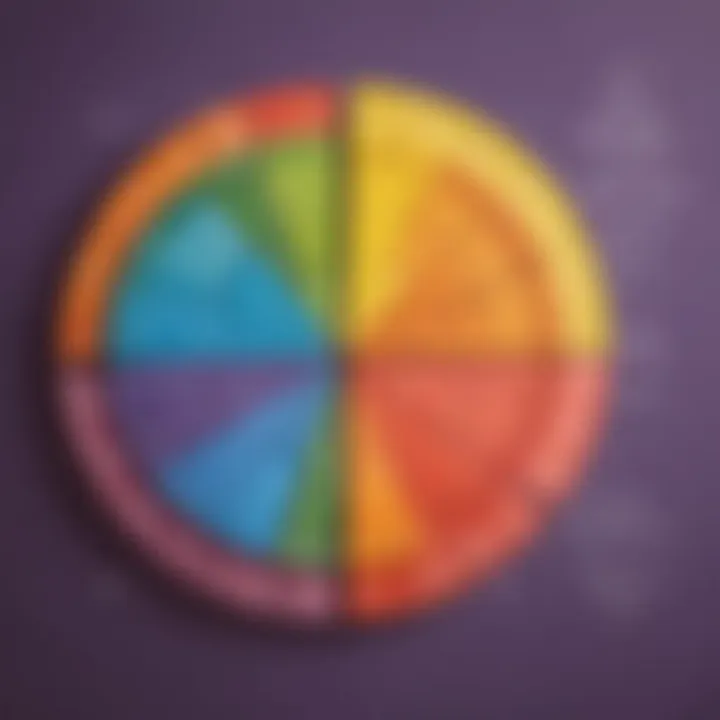
Intro
Subtracting fractions can seem daunting, especially when those fractions have different denominators. However, understanding how to navigate this process is an essential skill. Fractions represent parts of a whole, and when the denominators differ, we need to convert them to a common denominator before subtracting. This ensures that we are working with comparable quantities.
This article breaks down the steps for subtracting fractions with distinct denominators into clear, straightforward instructions. The goal is to equip children and their caregivers with the knowledge and tools needed to master this fundamental mathematical concept. The steps will be easy to grasp and include various methods to make learning more engaging.
Creative Activities
Engaging children in creative activities can boost their understanding of subtracting fractions. Here are some ideas:
- Fraction Art: Use colored paper cut into different fraction sizes to visualize subtraction. Children can see and physically manipulate the fractions, which aids retention.
- Cooking Projects: Have kids follow a simple recipe that requires measuring ingredients. This can illustrate how fractions play a role in everyday life while also combining math with a fun project.
Step-by-Step Guides
To make these activities effective, detailed instructions can enhance the learning experience. For example, in the Fraction Art project:
- Gather colored papers in various sizes, like whole, half, and quarter.
- Show children how to represent fractions visually using these papers.
- Ask them to create a visual subtraction problem using the paper, demonstrating how to find a common denominator.
Educational Value
These activities not only reinforce mathematical concepts but also develop problem-solving skills. Through hands-on experience, children learn to think critically and understand the practical application of subtracting fractions.
Fun Quizzes
Quizzes can serve as an effective method to reinforce the knowledge gained from this article. Here’s how they can be structured:
- Quiz Topics: Topics can include finding common denominators, real-life applications of fractions, and visual fraction representation.
- Question Types: Multiple-choice questions, true or false, and fill-in-the-blank formats can cater to various learning styles and keep students engaged.
Knowledge Reinforcement
These quizzes help to solidify the concepts learned. A quick, interactive quiz after learning can boost confidence and highlight areas for further review.
Fact-Based Articles
In addition to practical activities and quizzes, reading fact-based articles can expand children's understanding of fractions beyond just subtraction:
- Topics: Articles may cover basic fraction concepts, history of fractions, and real-world applications.
- Engaging Content: Articles should present information clearly and in a way that appeals to young learners.
Understanding Fractions
Fractions are an essential part of mathematics, forming the basis for more complex concepts. Understanding fractions is crucial for performing various operations, especially subtraction. When children grasp fractions, they gain insights into division and ratios, enhancing their overall mathematical ability. This article aims to break down the components and principles of fractions to support young learners in future math tasks.
Definition of a Fraction
A fraction represents a part of a whole. It is written as two numbers separated by a line. The number above the line is called the numerator, while the number below is known as the denominator. For example, in the fraction 3/4, 3 is the numerator, indicating how many parts we have, and 4 is the denominator, signifying the total parts that make up a whole.
By focusing on fractions, children can view everyday scenarios in a mathematical light. Whether they split a pizza or divide candy among friends, fraction knowledge applies directly to real-life situations.
Components of a Fraction
Every fraction comprises two primary components: the numerator and the denominator. Each plays a critical role in defining the value of the fraction.
- Numerator: This is the top number of the fraction. It indicates how many parts of a whole are being considered. In the fraction 5/8, for example, 5 tells us we have five of the eight parts.
- Denominator: This is the bottom number of the fraction. It indicates the total number of parts the whole is divided into. In the fraction mentioned earlier, 8 tells us that there are eight equal parts in total.
Understanding these components allows children to manipulate fractions effectively. They will learn how to compare, add, and subtract fractions with confidence once they can identify numerators and denominators accurately.
Understanding fractions' components is the first step towards mastering fraction operations.
Types of Denominators
Understanding the types of denominators is crucial for subtracting fractions effectively. The denominator is the bottom part of a fraction, indicating into how many equal parts something is divided. Depending on their characteristics, denominators are classified into two types: like denominators and unlike denominators.
Like Denominators
Fractions with like denominators share the same bottom number. For example,
1/4
- 3/4
Both fractions have a denominator of 4. This similarity makes subtracting fractions relatively simple. When you have like denominators, you can directly subtract the numerators (the top numbers) without any additional work.
For instance:
1/4 - 3/4 = (1 - 3) / 4 = -2/4 = -1/2
The result maintains the same denominator. In this case, simplicity is beneficial because it helps students grasp basic fraction operations without the complication of finding a common denominator.
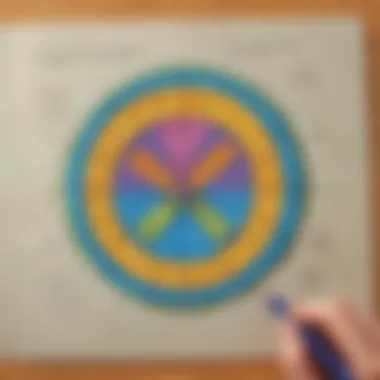

Unlike Denominators
Unlike denominators, on the other hand, differ in their bottom numbers. For example:
1/3
- 1/6
This difference necessitates finding a common denominator before subtraction can occur. The process involves identifying a value that both denominators can divide into evenly. This can be a daunting task for students, but it is a crucial skill in mastering fractions.
Consider the fractions above. To subtract 1/3 and 1/6, find the least common denominator, which in this case is 6. You would convert 1/3 into a fraction with a denominator of 6. This means:
- 1/3 = 2/6
Then, the subtraction can proceed as:
2/6 - 1/6 = (2 - 1)/6 = 1/6
Understanding both types of denominators prepares students for more complex fraction problems, reinforces the importance of common denominators, and builds foundational skills for future mathematical learning.
Why Common Denominators Are Necessary
When working with fractions, especially those that have different denominators, understanding the concept of common denominators is essential. This knowledge not only makes the process of subtraction easier but also ensures that the results are accurate. Without a common denominator, fractions cannot be directly combined or compared, leading to confusion and errors.
Concept of Common Denominator
A common denominator is a shared multiple of the denominators of two or more fractions. To subtract fractions effectively, you need to transform them so they share this denominator. For example, in the fractions 1/4 and 1/6, the individual denominators are 4 and 6. The least common multiple of these two numbers, which is 12, serves as their common denominator.
Finding the common denominator is crucial because it standardizes the fractions. This common ground allows for proper subtraction. If we do not convert 1/4 and 1/6 to their equivalent forms, we run the risk of miscalculating the result.
Using a common denominator ensures accurate results when subtracting fractions, preventing errors in calculations.
Impact on Subtraction
Subtraction becomes straightforward when you have a common denominator. When both fractions are rewritten to share the same denominator, the numerators can be directly subtracted from one another. For instance, with the previous example, converting 1/4 to 3/12 and 1/6 to 2/12 allows for a simple calculation: 3/12 - 2/12.
In addition, this method maintains the integrity of the fractions. It prevents complications that could arise if one fraction is mistakenly compared to another without proper conversion. By ensuring a common denominator, one can avoid mistakes, grasp the relationship between the fractions, and develop a deeper understanding of the arithmetic involved.
To summarize, common denominators are not just a mathematical formality; they are foundational for clear and accurate fraction subtraction. Whether subtracting simple fractions or tackling more complex problems, utilizing a common denominator is the first step toward success.
Finding the Least Common Denominator
Finding the least common denominator (LCD) is crucial when subtracting fractions with different denominators. The LCD helps us convert the fractions into equivalent fractions that have the same denominator. This step ensures that we can accurately subtract the numerators without losing the value of the original fractions.
When we have fractions like 1/4 and 1/6, they cannot be directly subtracted because their denominators are not the same. By finding the least common denominator, we make it easier to perform the subtraction correctly. Moreover, this skill helps in other areas of math where fractions appear, reinforcing a strong foundational understanding.
Identifying Multiples
To find the least common denominator, the first step is to identify the multiples of each denominator. Each denominator has a unique set of multiples:
- For 4, the multiples are: 4, 8, 12, 16, 20
- For 6, the multiples are: 6, 12, 18, 24, 30
The objective is to find the smallest multiple that appears in both lists. In this case, the multiples share 12 as the lowest one. Knowing how to list multiples is an effective strategy. Take some time to practice this method with different sets of fractions.
Using Factorization
Another method to find the least common denominator is through factorization. This process involves breaking down each denominator into its prime factors:
- The prime factors of 4 are 2 * 2.
- The prime factors of 6 are 2 * 3.
Next, we gather the highest powers of each prime factor:
- From 4, we take 2^2.
- From 6, we take 3^1.
Finally, to find the least common denominator, we multiply these highest factors together:
Thus, the least common denominator is again confirmed to be 12. Using factorization helps in cases where numbers can be larger or more complex, providing a systematic approach to finding the common ground between different denominators.
Remember, finding the least common denominator is the key to successfully subtracting fractions with different denominators. It allows for an accurate and meaningful mathematical operation.
Steps to Subtracting Fractions
Subtracting fractions may seem challenging at first, but understanding the essential steps makes it clear and manageable. The process involves converting the fractions to a common denominator and then focusing on the numerators before simplifying the result. Each of these steps plays a crucial part in helping elementary school children grasp the concept of fraction subtraction effectively.
Converting to a Common Denominator
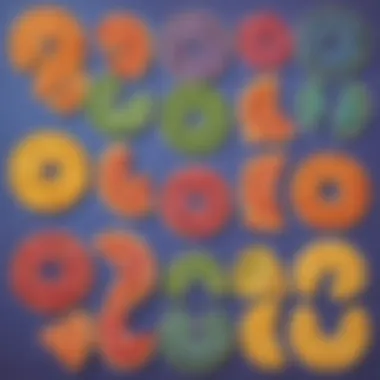
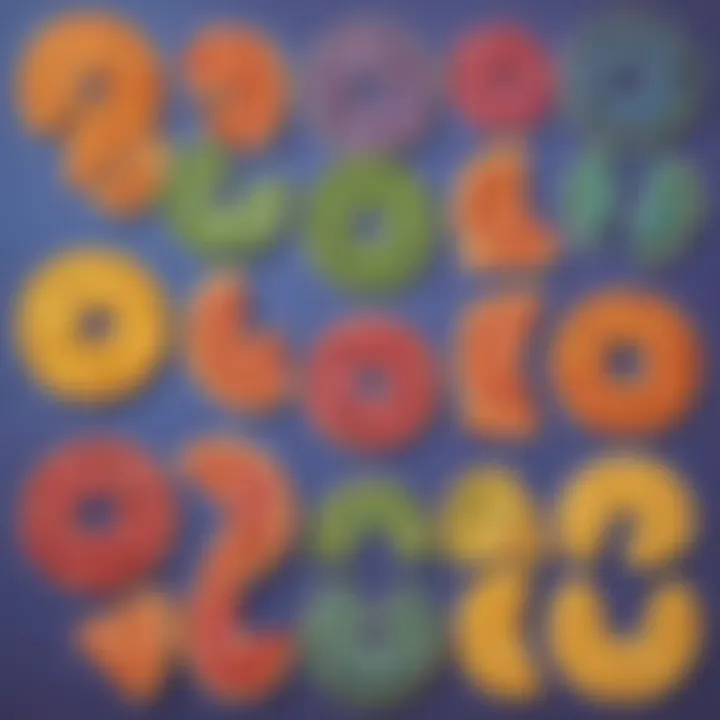
When dealing with fractions that have different denominators, the first step is to convert them to a common denominator. This is vital because fractions can only be subtracted when they share the same denominator. Without a common denominator, it is impossible to make accurate calculations. To find the common denominator, we usually identify the least common multiple of the existing denominators.
Steps to Convert:
- Identify the two or more denominators in the fractions. For example, in the fractions 1/4 and 1/6, the denominators are 4 and 6.
- Determine the least common multiple (LCM) of these denominators. In our example, the LCM of 4 and 6 is 12.
- Convert each fraction to an equivalent fraction with this common denominator. For instance, 1/4 becomes 3/12 and 1/6 becomes 2/12.
This method ensures that the fractions are now compatible for subtraction.
Subtracting the Numerators
Once the fractions share a common denominator, the next step is to focus on the numerators. This part is straightforward and involves simple subtraction.
Steps to Subtract Numerators:
- Take the resulting numerators from the fractions with the common denominator. Continuing our previous example, we have 3/12 and 2/12.
- Subtract the second numerator from the first. So, 3 - 2 equals 1.
- Keep the common denominator the same. Therefore, the fraction becomes 1/12.
This step reveals the difference between the two fractions using their numerators.
Writing the Resulting Fraction
After successfully subtracting the numerators, the final task is to write the resulting fraction clearly and, when possible, in its simplest form.
Steps for Writing the Result:
- Combine the result from the subtraction with the common denominator. In the previous example, we have 1 as the numerator and 12 as the denominator, yielding 1/12.
- Check if the fraction can be simplified further. In this case, 1/12 is already in its simplest form.
- Write down the final answer for clarity.
The resulting fraction should accurately represent the subtraction of the two original fractions. Following these steps ensures that students can confidently subtract fractions with different denominators.
Remember, understanding these steps is key for mastering the art of fraction subtraction, and practice will solidify these skills further!
Simplifying the Result
Simplifying the result after subtracting fractions is essential. This step ensures the final answer is presented in the most understandable way. A simplified fraction is easier to interpret and use in further calculations. It helps in recognizing the true value of the fraction, showing its simplest form.
When we subtract fractions, we may end up with a fraction that can be made simpler. This often involves identifying factors that are common to both the numerator and denominator. Simplifying increases clarity, making it more intuitive for students and readers to grasp the concept.
Identifying Common Factors
In this step, you will find factors that both the numerator and denominator share. Factors are numbers that divide exactly into another number. To simplify, you can follow these steps:
- First, list the factors of the numerator.
- Then list the factors of the denominator.
- Identify the common factors from both lists.
For example, if your resulting fraction is 8/12, the factors of 8 are 1, 2, 4, 8, and the factors of 12 are 1, 2, 3, 4, 6, 12. The common factors are 1, 2, and 4. The greatest common factor (GCF) is 4, and it will help in reducing the fraction.
Reducing the Fraction
Once the common factors are identified, the next step is to reduce the fraction. To reduce a fraction, divide both the numerator and denominator by their greatest common factor. In our previous example with 8/12:
- Divide the numerator (8) by the GCF (4). This gives 2.
- Divide the denominator (12) by the same GCF (4). This gives 3.
So, 8/12 simplifies to 2/3. The final fraction, 2/3, is now in its simplest form, making it easier to understand and use.
Remember, you can always check if the fraction is fully simplified by ensuring that the numerator and denominator do not have any common factors left other than 1.
The process of simplifying fractions emphasizes careful calculation and attention to detail. This practice helps you to perform operations accurately and gain confidence in handling fractions.
Example Problems
Simple Examples with Illustrations
When dealing with fractions that have unlike denominators, starting with simple examples can ease students into the process. For instance, consider the fractions 1/4 and 1/2. To subtract these fractions, we first need to find a common denominator.
- Identify the Denominators: The denominators here are 4 and 2.
- Find the Least Common Denominator: The least common multiple of these is 4.
- Adjust the Numerators: We keep 1/4 as it is, but we need to change 1/2 to have the same denominator. To do this, multiply both the numerator and the denominator of 1/2 by 2:(1/2 = (12)/(22) = 2/4)
- Subtract the adjusted fractions: Now, the subtraction looks like this:(1/4 - 2/4 = (1-2)/4 = -1/4)
- This result of -1/4 clearly shows the workings behind fraction subtraction.
Visual aids are quite helpful in this scenario. An illustration showing these steps can make the process more relatable to students.
Complex Example Problems
Once students are comfortable with simpler problems, they can be introduced to more complex ones. Consider the fractions 3/5 and 1/3. The steps to subtract these might seem daunting, but breaking them down clearly makes it manageable.
- Identify the Denominators: The denominators are 5 and 3.
- Find the Least Common Denominator: Here, the least common multiple of 5 and 3 is 15.
- Adjust the Numerators: Now, we change 3/5 to have a denominator of 15. To do this, multiply by 3:(3/5 = (33)/(53) = 9/15)For the fraction 1/3, multiply both by 5:(1/3 = (15)/(35) = 5/15)
- Subtract the adjusted fractions: Now, we subtract the two results:(9/15 - 5/15 = (9-5)/15 = 4/15)
- The final result is 4/15. This example provides insight into the necessity of converting fractions to have the same denominators before performing the subtraction.
Common Mistakes to Avoid
Ignoring Denominators
A frequent mistake is ignoring the denominators entirely. Some learners may focus only on the numerators when trying to perform the subtraction. This oversight leads to incorrect results. The denominator indicates the total number of equal parts a whole is divided into. Without considering it, the fraction's value is miscalculated.
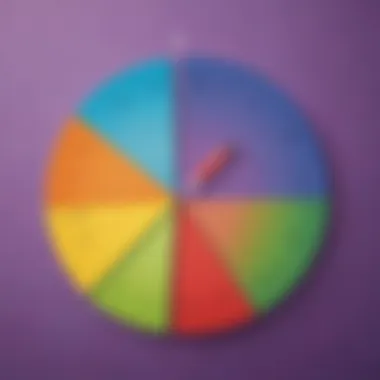
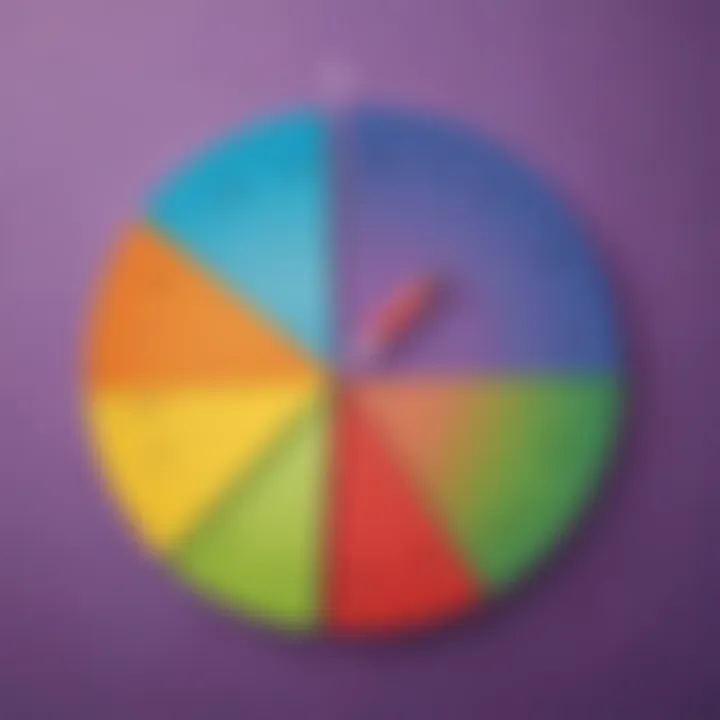
For example, if a student tries to subtract
[ \frac14 - \frac12 ]
without paying attention to the denominators, they might subtract the numerators only:
[ 1 - 1 = 0 ]
However,
[ \frac12 ]
actually equals
[ \frac24 ]
when expressed with a common denominator. Thus, the correct subtraction is
[ \frac14 - \frac24 = -\frac14 ].
Failing to Simplify
Another common error is failing to simplify the resulting fraction after subtraction. This step is essential for presenting the fraction in its simplest form. Simplifying involves finding the greatest common factor of the numerator and denominator and reducing the fraction accordingly.
For instance, after subtracting,
[ \frac510 - \frac210 = \frac310 ]
one must remember to check if it can be further simplified. If a fraction can be expressed in simpler terms, not doing so leaves the answer incomplete. Therefore,
[ \frac310 ]
is indeed in its simplest form, but other answers may not be. For example, an answer like
[ \frac48 ]
could be simplified to
[ \frac12 ]
This oversight may confuse students in future calculations.
Recognizing and correcting these common mistakes fosters a stronger understanding of fractions. Making students aware of their errors allows for growth and better accuracy in their mathematical journey.
Educational Resources
Several elements make educational resources effective:
- Accessibility: Resources should be easy to access, especially online tools, allowing students to practice at their own pace.
- Variety: Different types of materials cater to various learning styles. Whether it is visual, auditory, or kinesthetic, having multiple resources can help accommodate these differences.
- Depth: Materials that offer not just practice problems but also explanations and illustrations of concepts can significantly aid in comprehension.
Incorporating these considerations when choosing educational resources can greatly benefit students. They can practice and reinforce what they’ve learned in the main article, leading to a stronger understanding of fractions.
Online Tools for Practice
Online tools offer a dynamic way for students to practice subtracting fractions with different denominators. Websites often provide interactive exercises, which can make learning more engaging. Some popular options include educational platforms that feature practice questions, step-by-step solutions, and instant feedback. Such immediate responses allow students to learn from their mistakes and understand the path to the correct answer.
- Khan Academy: Offers a comprehensive section on fractions, including practice exercises tailored to various skill levels.
- IXL Learning: Provides personalized learning plans and drills that focus specifically on fraction subtraction.
- Prodigy Math: This game-based learning platform makes practice fun while reinforcing essential math skills.
Utilizing these online tools enables children to gain confidence in their skills. They can practice various scenarios and receive assistance at any hour of the day.
Books and Worksheets
Books and worksheets can complement online learning effectively. They provide structured lessons and exercises, often serving as reference materials. Parents and caregivers may find these resources particularly beneficial as they offer a way to engage with children in a focused manner.
Recommended Books:
- **
Finale
Subtraction of fractions with different denominators is an essential skill. Understanding how to find common denominators allows students to perform operations on fractions with confidence. This article highlighted the significance of grasping these concepts, enabling learners to tackle similar challenges in mathematics.
Recap of Key Points
- Understanding Denominators: Recognizing like and unlike denominators is crucial for fraction operations.
- Common Denominator: Having a common denominator is necessary for subtracting fractions accurately.
- Finding the Least Common Denominator: Identifying the smallest common multiple streamlines the subtraction process.
- Steps for Subtraction: Converting fractions, subtracting numerators, and rewriting results are fundamental steps.
- Simplifying: Reducing fractions to their simplest forms ensures clarity.
- Avoiding Mistakes: Paying attention to denominators and ensuring simplification can prevent common errors.
Encouragement for Practice
Practicing subtraction with fractions can fortify understanding and build confidence. Working through problems, both simple and complex, will aid in retention of skills. Here are some suggestions:
- Use Online Tools: Websites offer interactive exercises to practice subtracting fractions.
- Work with Peers: Collaborating with classmates can enhance learning.
- Seek Help: If difficulties persist, asking teachers or caregivers for assistance is vital.
By actively applying the steps and understanding discussed in this article, learners can excel in their mathematical journey. Regular practice of these concepts will develop their skills further.







